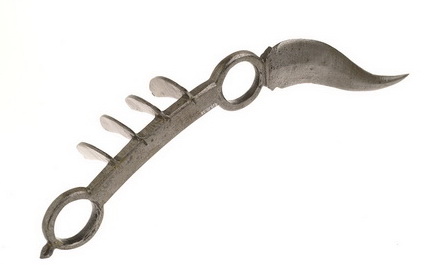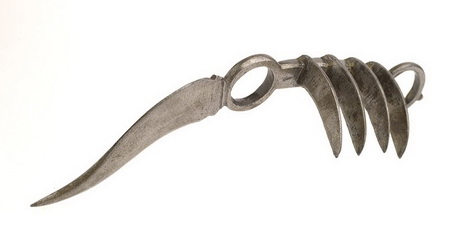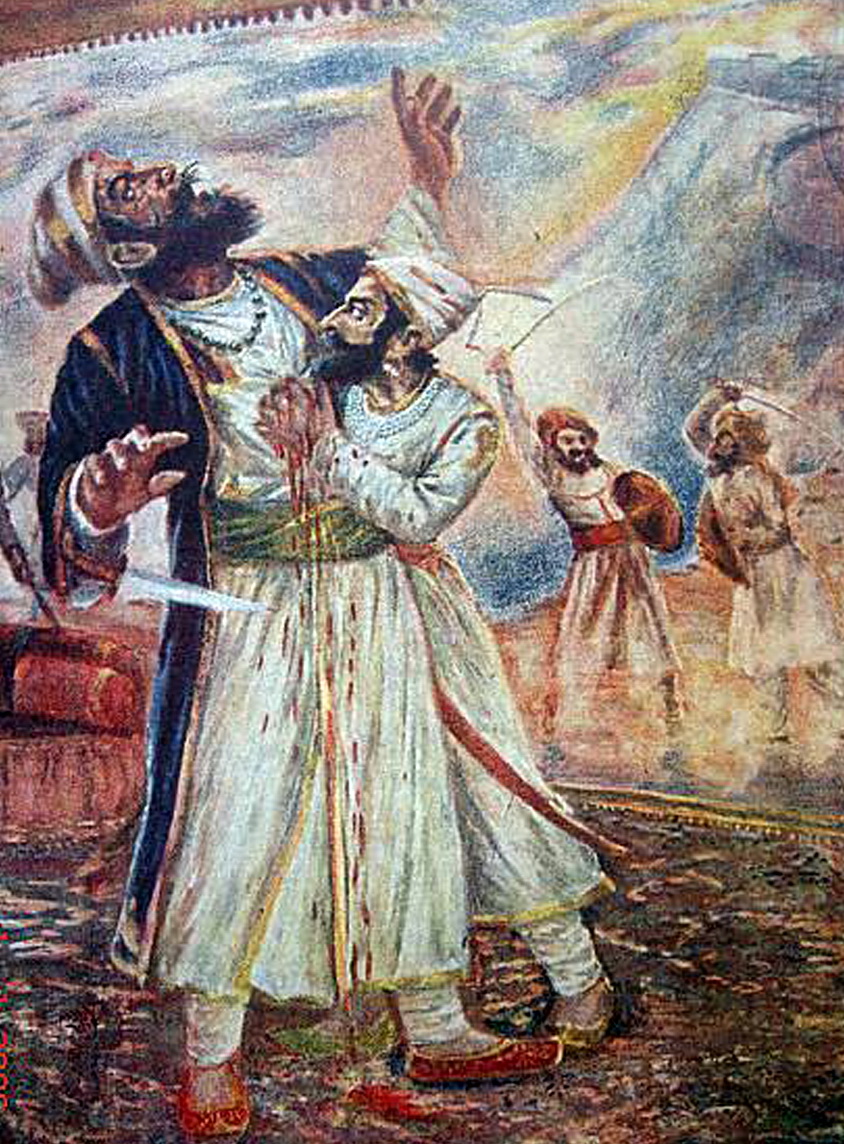Weapon Wednesday: Bagh Nakh--making humans into tigers
Published
Categories
Blog Post
Written by Aruna Panday, Ph.D Candidate York University, Co-Chair Friends of South Asia Committee, and ROM curatorial intern.

Bagh nakh (tiger-claw weapon), lacquered steel, India, 19th century, ROM 913.10.28

Bagh Nakh (also called Bagh naka, wagh nakh or bhagunakha) translates from Hindi to English to mean "tiger claws." The central knuckle duster of this steel or iron Indian weapon is flanked by two finger holes though which the thumb and pinky fit, concealing three to five curved blades in the palm of the hand and turning the wearer's hand into a tiger claw. For complete concealment, the knuckle duster could be decorated with gems giving the appearance of wearing rings. The blades, like the tiger claws they are named for, are made to slash though an opponent's skin and muscle. In some cases, there is the addition of one or two blades that project from the side of the bagh nakh, an additional weapon that would have been used for jabbing, or thrusting.

Detail of a popular print based on a painting showing Shivaji killing Afzal Khan with a bagh nakh, by Chitrashala Press, Poona, 1920s, image source here. Note the dagger worn by Khan was the subject of a previous Weapon Wednesday Blog here.
The bagh nakh is most often associated with the Hindu Marati warrior Shivaji. Shivaji was born in 1630 at time when all of India, except the southernmost tip, was under Islamic rule -- the Moghuls were in the north and the Muslim sultans were in the Deccan. Shivaji fought against Islamic colonization and subsequent repression of Hinduism and local practices. The story goes, that in 1659 Shivaji had a meeting with the Bijapur Sultanate General Afzal Khan. Shivaji suspected the General would try something tricky and so wore chainmail under his clothing and a bach nakh in his hand. When the two leaders embraced, the traditional greeting, Khan tried to attack Shivaji with his katar but it failed to pierce Shivajis chainmail. Shivaji then took his hand with the small, concealed bagh nakh and, like a tiger, clawed Khan, inflicting mortal wounds. This led to the Battle of Pratapgarh, between Shivaji's forces and the Bijapur Sultanate's forces ending with Shivaji's triumph and transformation to a hero and to the rise of Maratha power transforming the face of Indian politics.



